These transport, energy and technology innovations – some far-sighted, others just pipe dreams – are on the MS Amlin radar.
The F1 of the skies
Is this the start of Formula 1 racing in the sky? Australian manufacturer Alauda has built a flying car that lands and takes off vertically, and can reach speeds up to 125mph (200kph). Powered by four propellers and an interchangeable 500kW battery pack, it’s called the Airspeeder. It measures just over four metres long, weighs 230 kgs and can reach a maximum altitude of 900 metres. According to the manufacturers, it has “a better power-to-weight ratio than a Formula 1 car or a fighter jet”.
Alauda has already tested a remote-controlled version. Thanks to a seven-figure investment deal, it intends to stage competitive racing with human drivers on board in 2020.
“We want to start a whole new golden age of flying motoring,” says Matt Pearson, founder of Alauda. “What we’ve done is merge an F1 car with a racing drone and turned it into something completely new. The future of racing is here.”
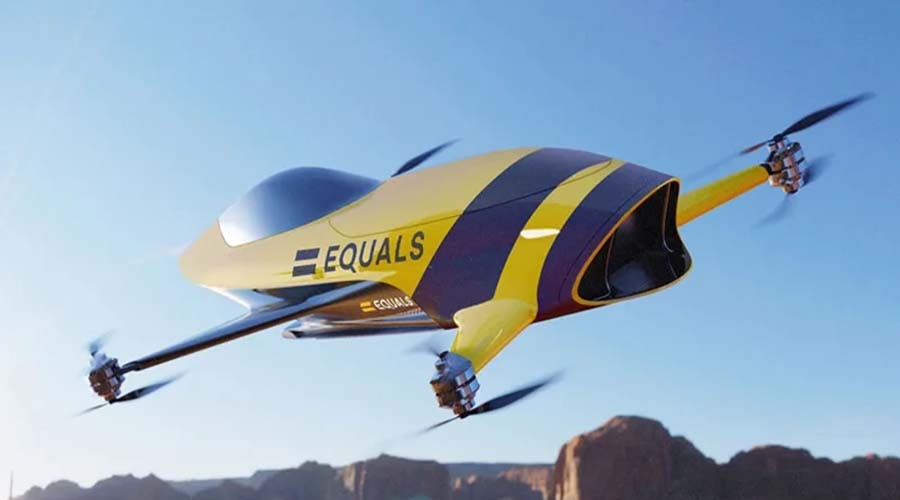
Above: The Airspeeder, a flying car able to take-off and land vertically, built by Australian manufacturer, Alauda.
Image source: https://www.electrive.com
A greener future for shipping
This is Vindskip – a container ship that uses its hull as a sail. Designed by Norwegian company Lade As, the concept vessel would use its hull as a giant air foil to generate aerodynamic lift in much the same way that an aeroplane takes off from the runway when it reaches a certain speed. With the ship pointed as much as 18 degrees into the wind, the vacuum created on the lee side of the vessel (the side sheltered from the wind) is enough to pull it forwards. Lade As claim it will save 60 per cent of normal fuel and reduce carbon dioxide emissions by up to 80 per cent.
Vindskip isn’t totally wind-powered – it relies on liquefied natural gas to accelerate from a standstill – but the concept is being taken increasingly seriously by a shipping industry keen to go green. Having spent the last five years perfecting their concept in a wind tunnel, the manufacturers now hope to license the design to ship builders around the world.
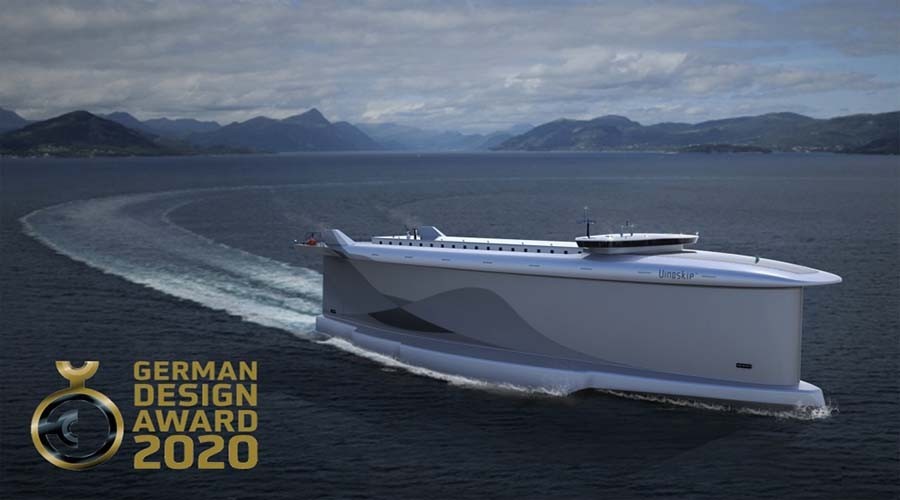
Above: The Vindskip, a container ship that uses its hull as a sail.
Next-gen nuclear power
Here’s one way to beat climate change yet still produce the electricity the world needs. US company NuScale Power believes that its small modular nuclear reactors – which produce 60MW, compared to the traditional 1000MW of large nuclear reactors – could provide the planet with safer, cheaper power. Partnering with the US Department of Energy, Oregon-based NuScale plans to install a pool of 12 mini reactors at the Idaho National Laboratory. Together they would generate about the same amount of power as a conventional nuclear plant – enough for 540,000 homes.
There are two great advantages to small modular reactors. Firstly, their next-generation design is simpler, with fewer fuel rods, pumps and moving parts, so there is virtually no chance of a meltdown. Secondly, the pool can be scaled up or down according to demand, making them super-efficient.
NuScale hopes the first of its new reactors will be up and running by 2027.

Above: Partnering with US Department of Energy, NuScale is planning to install 12 mini reactors at Idaho National Laboratory to generate what they believe to be safer, cheaper energy.
The friction-powered plane
Nervous flyer? You probably wouldn’t want to board an aeroplane that uses air friction to generate its power. This is the revolutionary Eather One – an electric aircraft that doesn’t require a large battery or fuel tanks to stay in the sky. Still a concept, it would use what are known as triboelectric nanogenerators to capture the mechanical energy from the vibrations of the plane’s wing structure and the friction from the bending of the wings during flight. This energy could then be used to power the plane’s small electric motors. A small battery, meanwhile, would provide the power needed during takeoff and landing
According to the industrial designer behind the idea – Warsaw-based Michal Bonikowski – without bulky batteries or fuel tanks, the aircraft would be lighter, more spacious and less polluting than conventional models.
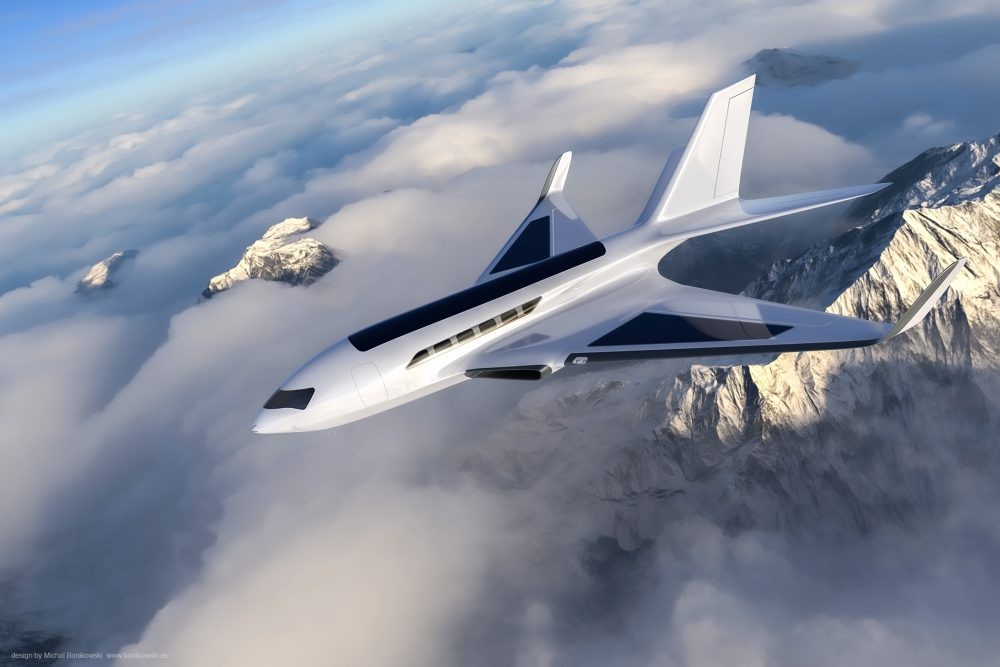
Above: The Eather One - an electric aircraft designed by Warsaw-based Michal Bonikowski - that would utilise mechanical energy and air friction to power small electic motors to fly.
Tom Cruise to shoot a movie in space
Tom Cruise is teaming up with NASA to shoot the first Hollywood movie in space. According to the head of NASA Jim Bridenstine, the American actor will visit the International Space Station for the project. “We need popular media to inspire a new generation of engineers and scientists to make NASA’s ambitious plans a reality,” Bridenstine said on Twitter.
There are few details yet, however, it’s likely that Cruise, star of the Mission: Impossible franchise, will travel to the space station aboard a SpaceX spacecraft. Elon Musk, founder of the space transport company, appeared to confirm the proposal by tweeting: “Should be fun!”
It wouldn’t be the first time Cruise has taken a big risk. The daredevil actor is famous for performing his own stunts, whether that’s scaling the world’s tallest building (in Mission: Impossible – Ghost Protocol), hanging from the side of an aeroplane during takeoff (in Mission: Impossible – Rogue Nation) or breaking his ankle while leaping across rooftops (in Mission: Impossible – Fallout). Let’s hope his insurance premiums are up to date.

Above: Tom Cruise is planning to travel to the International Space Station to shoot the first Hollywood movie in space, in collaboration with NASA.
Go fly a kite
Here’s kite-surfing on a truly grand scale. Two yacht designers have devised an idea to propel a 64-metre super-yacht using a 158-square-metre kite sail. Dubbed Ice Kite, the design concept sees the giant sail stretching up 180 metres overhead where it would harness wind power and drive the aluminium and carbon fibre vessel through the water. On days when there’s no wind, a pair of 735kW diesel engines give Ice Kite a maximum speed of 17.4 knots.
A collaboration between Red Yacht Design and Dykstra Naval Architects, the vessel would be luxurious as well as green. Inside is a spa, while on deck there’s a helipad and swimming pool. The owners can keep an eye on their kite sail through a domed glass ceiling.
An unnamed German entrepreneur is accepting bids from shipyards to build the yacht, so it might become a reality soon.
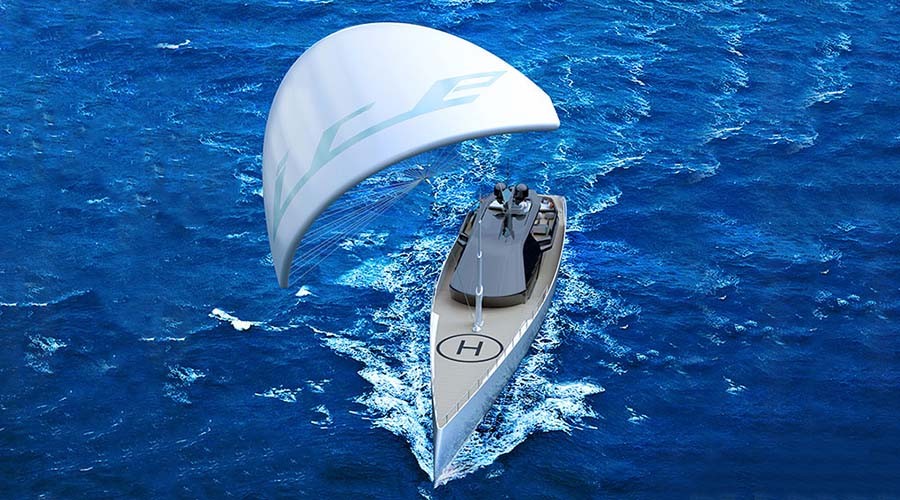
Above: Ice Kite, a design concept which envisions a 158-square-metre kite sail propelling a 64-metre super yacht, for a luxurious and 'green' journey.
Monster from the deep
Here’s a new twist on underwater robotics: a robotic sea snake that can reach into the smallest of gaps. Designed for use on oil and gas platforms, Eelume, as it has been named, will be tasked with inspecting, maintaining and repairing infrastructure. The battery-powered device can swim like a snake, contracting its body to propel itself forwards. A camera mounted towards the back would provide the human operator above the surface with great view of claws, brushes and tools on the front of the snake.
Normally, the energy industry spends huge sums of money on platform maintenance, using bulky subsea vessels that take hours to prepare and many staff to operate.
Currently being tested in Norwegian waters, Eelume will live in a garage on the sea bed, springing into action when needed, using its flexible body to squeeze into tiny gaps. “A bit like a subsea Swiss army knife – always ready for action,” says Kristin Aamodt, from Statoil Technology Invest, a company supporting the project.
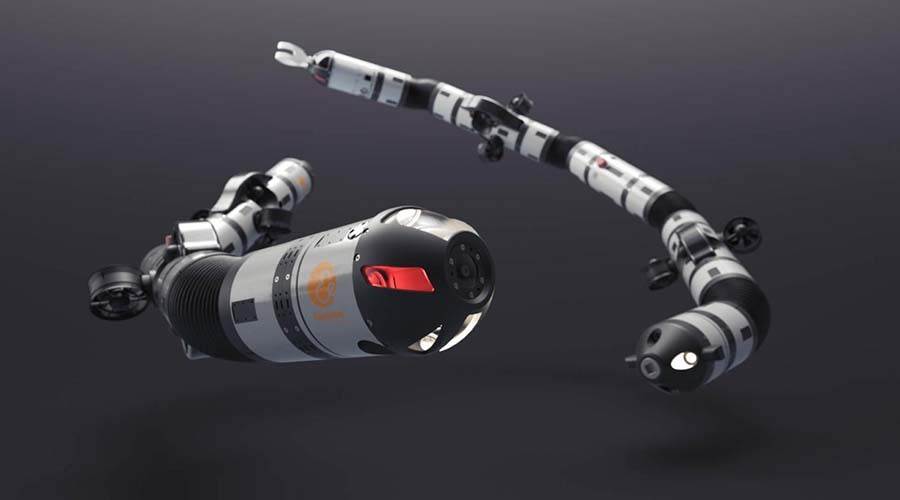
Above: Eelume, a battery-powered device designed to inspect, maintain and repair infrastructure underwater.
Volvo’s laser-guided car
Car manufacturer Volvo is building a self-driving vehicle that uses lasers to navigate the road for up to 250 metres ahead. The all-electric Volvo 360c – still just a concept for the moment – can even tell the difference between a fire hydrant and a small child, or spot a dog before it darts out into the street. The company claims its laser-scanning technology (or lidar) will help cars “see further, and more, than ever before.”
Lidar works by firing out thousands of light pulses every second. Measuring the time it takes for the light to rebound off objects allows the 360c to draw a highly detailed 3D map of its surroundings.
Most of the lidar systems used in current cars on the market can see only 150 metres ahead, meaning that advanced lidar could prevent thousands of accidents in the future. Volvo hopes to begin producing the 360c in 2022.
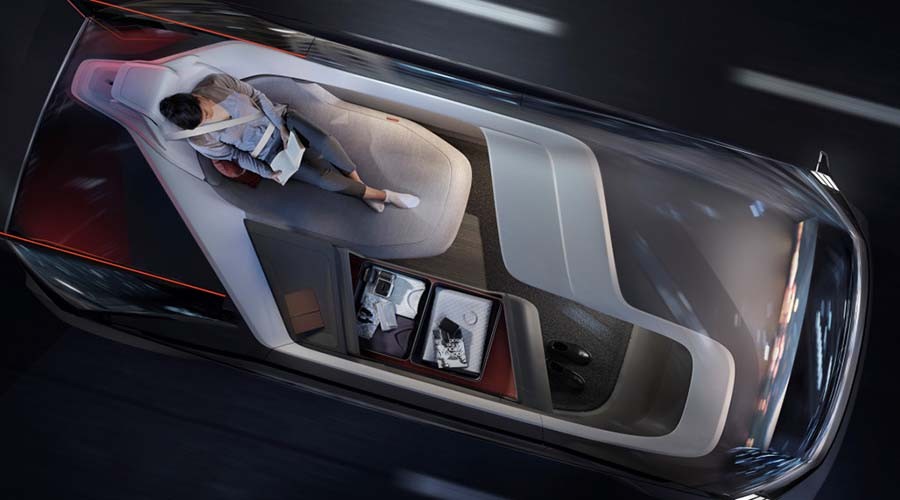
Above: Volvo's 360c, a design concept of a self-driving vehicle that uses lasers to navigate the road.
